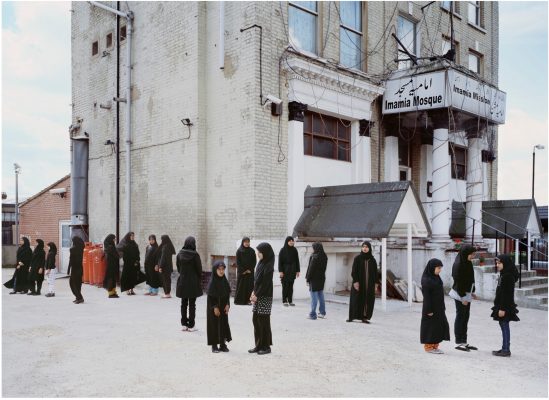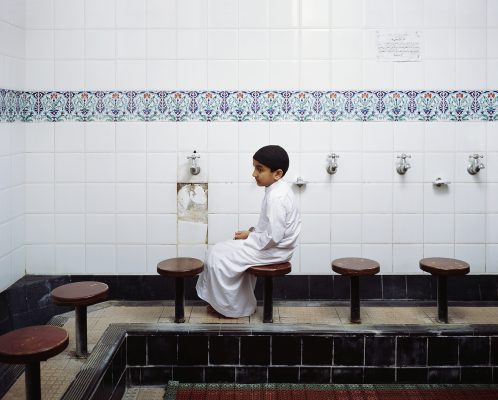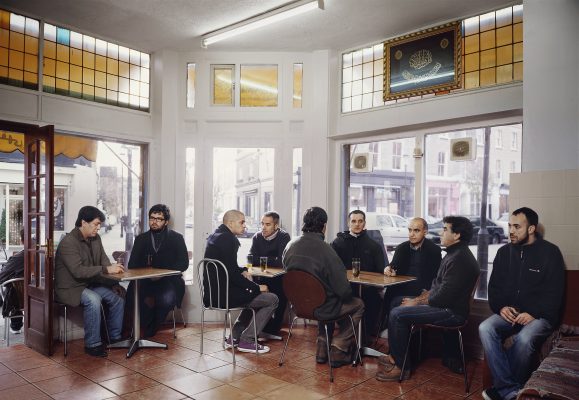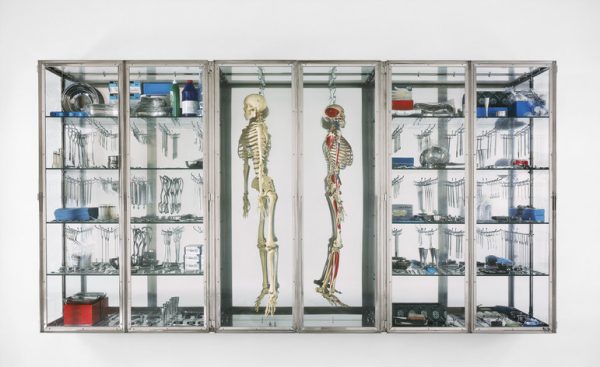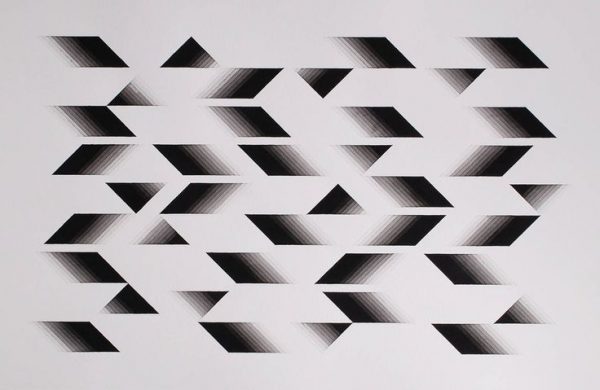Mitra Tabrizian’s Another Country (2010), a collection of nine large-scale photographs taken between 2009-2010, present to the viewer an uneasy vision of a location where space and time are indistinct, as are the subjects within it.
Homi K. Bhabha has noted that the individuals presented in these works are too distant from us to be the subjects of portraits, but too close to be part of the landscape. Rather, they appear as figures in an affectless space – a space rendered such by its flatness, its clarity, by the clear light that cuts across it. The signifiers that surround them are those of their everyday life (café, school, graveyard) but are ones in which they do not seem to participate: they are dis-placed within Tabrizian’s carefully choreographed scenes.
This particular series of Tabrizian’s photographs involves ‘real people’ – immigrants who have come to Europe from the Middle East, and their children, some of whom were born in the UK. They have been arranged in these scenes by Tabrizian, and they are therefore occupying their own places strangely. The chosen locations are purposefully ambiguous, from the theme of the series we might assume that they are in Britain, an emblem of Tabrizian’s interest in cultural hybridity. These people are both displaced in the strict territorial sense and displaced as subject to their memories, to a past in yet another country.
These photographs seem to demonstrate the artifice of belonging to a place, and the extent of the social choreography at work in such situations even when there’s no camera present. In a sense these people are called upon by Tabrizian to do what immigrants everywhere are supposed to do: to enact their place in this country, to become local by performance and repetition.
We may begin to ask ourselves, how do we become local while remembering where we came from? How do we learn to make our place in these spaces that aren’t our own? Precisely by attending with great care to how we arrange ourselves within that space, and then representing that arrangement as natural. Such blatantly choreographed street scenes make the enactment obvious. Her crowds are not exactly a group and neither are they exactly individuals; their relationships to one another appear strained and artificial.
Tabrizian’s other work, especially the series City, London (2008) uses the same device of obvious arrangement to show bankers appearing confused and dwarfed by their own places of work. In Another Country the familiar environments seem to perplex their inhabitants too, but this series bears the closest resemblance to Tabrizian’s latest work, Leicestershire (2012). Here the figures occupy the same middle ground between subject and background, but the backdrop is the ruin of the industrial city, rather than a social space. The sense of memory and loss carries through both series so that in her work we are confronted with a persistent questioning of what are the forces that displace people, and how is it that they might appear to belong again.
Mitra Tabrizian, Another Country ran from 21 September to 2 November 2012 at Wapping Project Bankside, London.
share
ABOUT THE CONTRIBUTOR
Matt Mahon
is a researcher at the Institute of Commonwealth Studies and a contributor to thethirdestate.net.Born in Tehran, Tabrizian studied at the Polytechnic of Central London in the 1980s and she now works and lives in London. She has recently had solo exhibitions at Tate Britain (2008) and Moderna Museet, Stockholm (2006). Forthcoming exhibitions include Light from the Middle East at the Victoria and Albert Museum (November 2012). Her new book (Another Country) was published by Hatje Cantz in March 2012.
